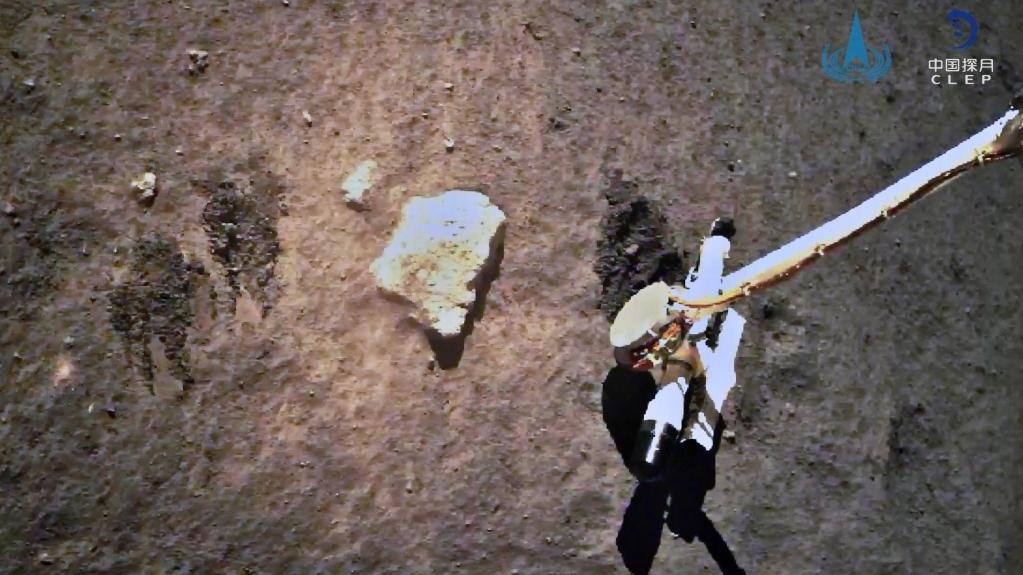 This file photo dated Dec 2, 2020 provided by the China National Space Administration (CNSA) shows Chang'e-5 probe gathering samples on the moon. (PHOTO / XINHUA)
This file photo dated Dec 2, 2020 provided by the China National Space Administration (CNSA) shows Chang'e-5 probe gathering samples on the moon. (PHOTO / XINHUA)
The Chang'e 6 mission, China's next robotic expedition to the moon, has been scheduled to land on the moon next year, tasked with bringing back samples from the silver celestial body's little-known far side, according to the China National Space Administration.
So far, the Chang'e 6 project has progressed smoothly as per the plan, the administration said in a news release on Friday.
Tidal forces on Earth slow the moon's rotation to the point where the same side always faces Earth. The other side, most of which is never visible from Earth, is the moon's far side
To facilitate the communications between the Chang'e 6 probe and Earth, a new relay satellite named Queqiao 2 is set to be deployed in a lunar orbit in the first half of 2024, it noted.
READ MORE: China to realize manned lunar landing by 2030
The Chang'e 6 spacecraft will consist of four components – orbiter, lander, ascender and re-entry module.
If everything goes according to plan, it will touch down in the South Pole-Aitken Basin.
The mission will involve an on-site investigation on the far side of the moon, the retrieval of samples, and systematic and long-term laboratory research on samples collected.
If the mission succeeds, it will become the first time for man to get samples from the far side.
Tidal forces on Earth slow the moon's rotation to the point where the same side always faces Earth. The other side, most of which is never visible from Earth, is the moon's far side. Though the far side had been extensively photographed by spacecraft, starting with a Soviet probe in 1959, no probe had ever touched down on it until China's Chang'e 4 mission that soft-landed in the Von Karman crater in the South Pole-Aitken Basin in January 2019.
China opened its lunar program in 2004 and has launched five robotic probes since 2007. The most recent mission, the Chang'e 5, landed on the moon in December 2020 and soon returned 1,731 grams of lunar rocks and soil back to Earth, achieving a historic accomplishment about 44 years after the last lunar substances were brought back from our nearest celestial neighbor.
READ MORE: China's rocket engine trial for crewed lunar missions sets record
In addition, the rover in the the Chang'e 4 mission, named Yutu 2, has been working there for nearly five years as the world's longest-operating lunar rover.



